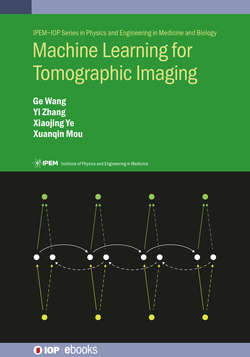Читать книгу Machine Learning for Tomographic Imaging - Professor Ge Wang - Страница 13
На сайте Литреса книга снята с продажи.
0.2 Image analysis versus image reconstruction
ОглавлениеAs the most famous examples of AI/ML applications, computer vision and image analysis deal with existing images and produce features of these images thanks to the great efforts of many talented researchers. We are researchers in the field of tomographic imaging, and our products are tomographic images reconstructed from externally measured, complicated data that look totally different from the underlying images, and are actually various features (attenuated/non-attenuated line integrals, Fourier/harmonic components, and so on) of the underlying images. Currently, machine learning (especially deep learning) techniques are being actively developed worldwide for tomographic image reconstruction, which is a new area of research, with low hanging fruit in terms of data-driven post-processing and high hanging fruit in terms of end-to-end mapping via transfer, adversarial, ensemble, and other forms of machine learning.
This first-of-its-kind book is dedicated to machine learning for tomographic image reconstruction, or tomographic imaging, primarily targeting image reconstruction (from data to images) with some mentions of relevant image analysis (from images to images/features) and end-to-end mapping (from data to features). Tomography is a Greek word, meaning reconstruction of cross-sectional images. It is the emphasis on tomography that sets our book apart from other AI/ML or deep learning books (figure 0.4).
Figure 0.4. Uniqueness of this book, dedicated to tomographic image reconstruction in the AI/ML framework, in contrast to deep learning for image analysis or computer vision that takes images as the input.
